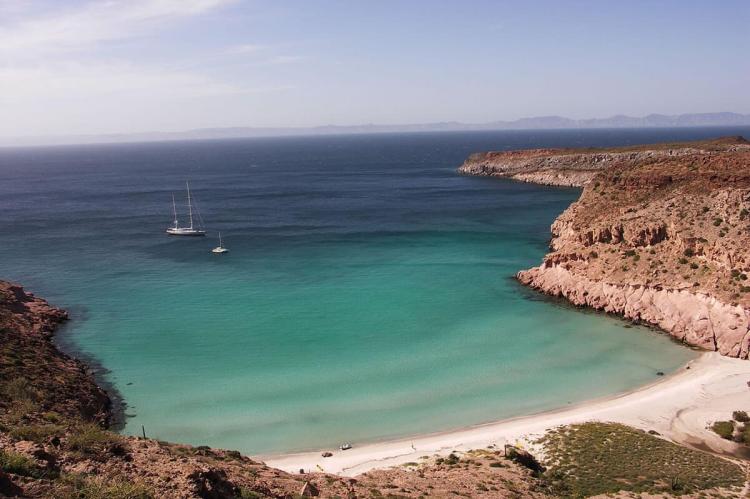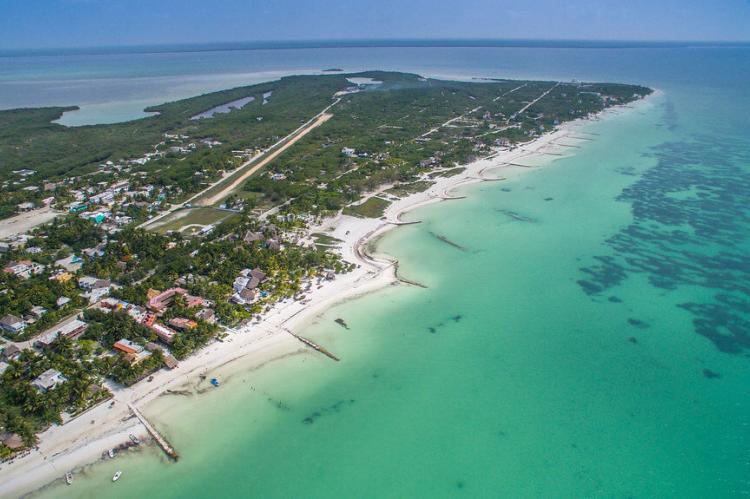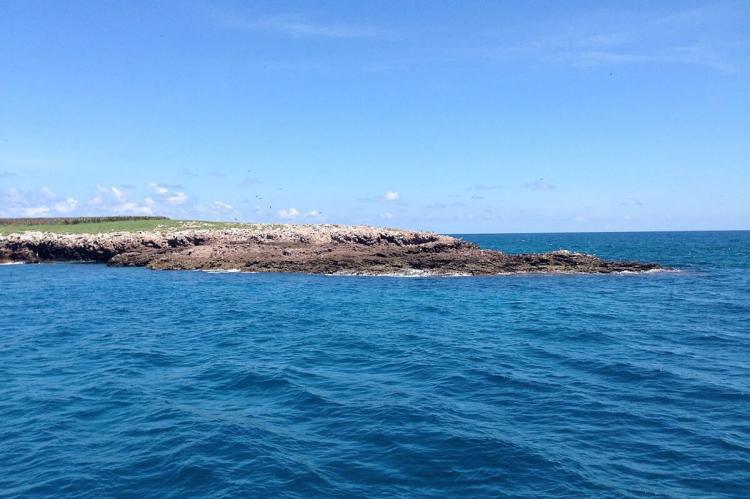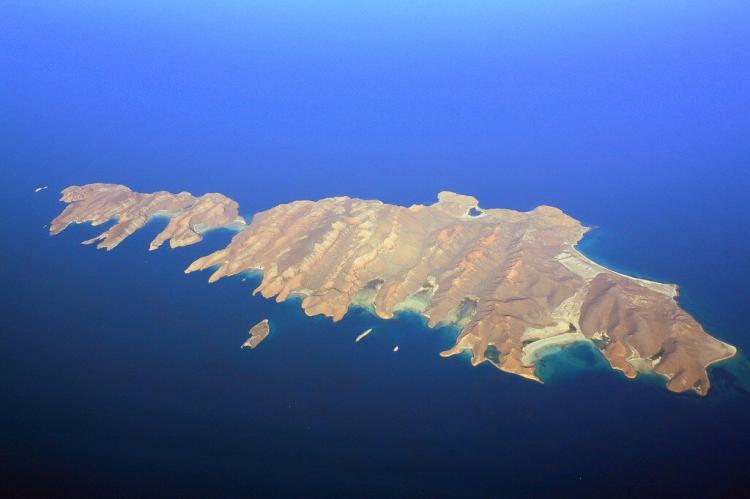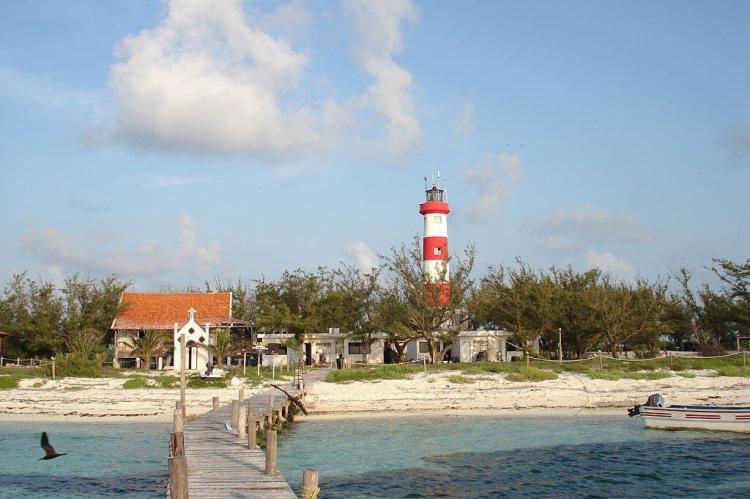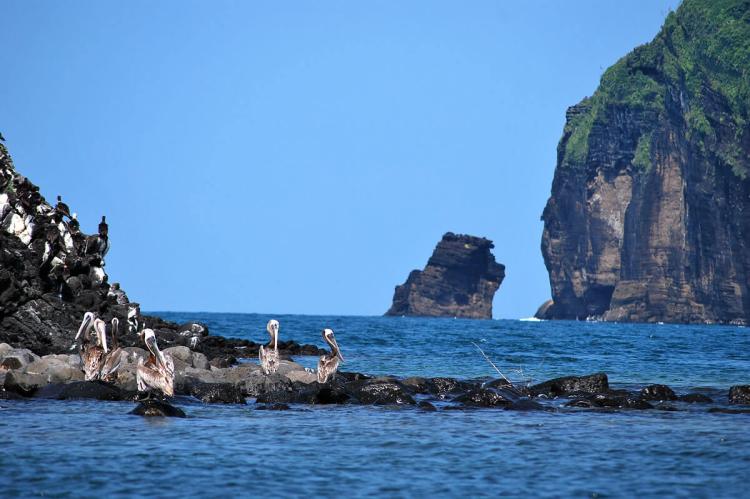Islands and Archipelagos of Mexico
Mexico, a land of rich heritage and breathtaking landscapes, extends beyond its mainland borders to encompass an array of islands and archipelagos scattered across its coastal waters. Nestled within the Pacific Ocean and the Gulf of Mexico, these landmasses showcase the nation's diverse geography.
Islands and Archipelagos of Mexico
Mexico, a land of rich cultural heritage and breathtaking landscapes, extends its allure beyond its mainland borders to encompass a stunning array of islands and archipelagos scattered across its coastal waters. Nestled between the Pacific Ocean and the Gulf of Mexico, these picturesque landmasses are evidence of the nation's diverse geography and vibrant heritage.
Mexico's islands and archipelagos form a captivating offering of natural wonders, cultural traditions, and ecological significance. From the Caribbean's white sandy beaches and crystalline waters to the rugged coastlines and lush rainforests of the Pacific, Mexico's island treasures beckon travelers to embark on a journey of exploration and discovery.
Pacific Panoramas
Along the shores of the Pacific Ocean, Mexico's islands and archipelagos reveal a world of rugged beauty and ecological marvels. The Baja California Peninsula, with its iconic Cabo San Lucas and the enchanting Sea of Cortez, is home to many islands, including Isla Espíritu Santo and Isla Partida, renowned for their pristine beaches and diverse marine life. Further south, the Revillagigedo Archipelago, a UNESCO World Heritage Site, offers unparalleled opportunities for diving and wildlife encounters, with its thriving coral reefs and diverse array of marine species.
Gulf Coast Gems
On the shores of the Gulf of Mexico, Mexico's islands and archipelagos offer a different yet equally enchanting experience. The Veracruz Reef System, comprising islands such as Isla de Sacrificios and Isla de Enmedio, provides a haven for marine biodiversity, with vibrant coral reefs and mangrove forests teeming with life. Meanwhile, the Yucatán Peninsula is home to the stunning archipelago of Isla Mujeres and Cozumel, celebrated for their pristine beaches, ancient Mayan ruins, and vibrant underwater ecosystems.
Cultural Heritage
Beyond their natural beauty, Mexico's islands and archipelagos have a rich cultural heritage that reflects the nation's diverse history and traditions. From the Pacific coast's Indigenous communities to the Caribbean's vibrant Afro-Mexican culture, each island offers a unique opportunity to explore Mexico's rich tapestry of traditions, music, and cuisine.
Preservation and Sustainability
As guardians of Mexico's island treasures, conservation efforts play a crucial role in safeguarding the ecological integrity of these fragile ecosystems. Marine protected areas and wildlife reserves have been established to protect endangered species and preserve the natural beauty of Mexico's islands and archipelagos. Through sustainable tourism practices and environmental stewardship, Mexico strives to ensure that future generations can continue to marvel at the wonders of its island paradises.
Archipelagos
Islas Marietas (Marietas Islands): Located off the coast of Nayarit, the Islas Marietas Archipelago is a protected national park known for its unique "Hidden Beach" and diverse marine life. It offers snorkeling, diving, and birdwatching opportunities.
Islas Revillagigedo (Revillagigedo Islands): The remote Pacific Archipiélago de Revillagigedo, which comprises Socorro, San Benedicto, Roca Partida, and Clarión islands, is a UNESCO World Heritage site. It's a paradise for divers and offers encounters with large marine species like sharks and manta rays.
Islas Marías (Maria Islands): Located in the Pacific Ocean, these islands were once a prison colony but are now a biosphere reserve. They are known for their unique ecosystem and are home to diverse plant and animal species.
Archipiélago de San Lorenzo (San Lorenzo Archipelago): Located in the Gulf of California, Archipiélago de San Lorenzo includes San Lorenzo Island and several smaller islands. It's an important area for marine biodiversity and conservation.
Islas de la Bahía de Loreto (Loreto Bay Islands): Situated in the Gulf of California, this archipelago is part of the Loreto Bay National Park. It's known for its pristine beaches, coves, and opportunities for water-based activities.
Archipiélago Espíritu Santo (Espíritu Santo Archipelago): This Gulf of California archipelago, which comprises Isla Espíritu Santo and Isla Partida, is known for its crystal-clear waters, diverse marine life, and stunning rock formations. It's a popular spot for ecotourism and kayaking.
Islas Golfo de California (Gulf of California Islands): The Islas del Golfo de California is a group of islands within the Gulf of California, each contributing to the region's rich marine biodiversity. Some of the islands are protected as biosphere reserves.
Islas Venados (Venados Islands): Located in the Gulf of California, these islands are part of the municipality of Mazatlán. They are known for their beaches and are a popular water sports destination.
Islas Tres Marías (Tres Marías Islands): Situated off the coast of Nayarit, these islands are a biosphere reserve home to diverse flora and fauna. They offer opportunities for ecotourism and outdoor activities.
Islas Chinchorro (Chinchorro Islands): These islands, located near the Mexico-Belize border, are part of the Banco Chinchorro Biosphere Reserve. They are known for their coral reefs and diverse marine life, making them a popular diving destination.
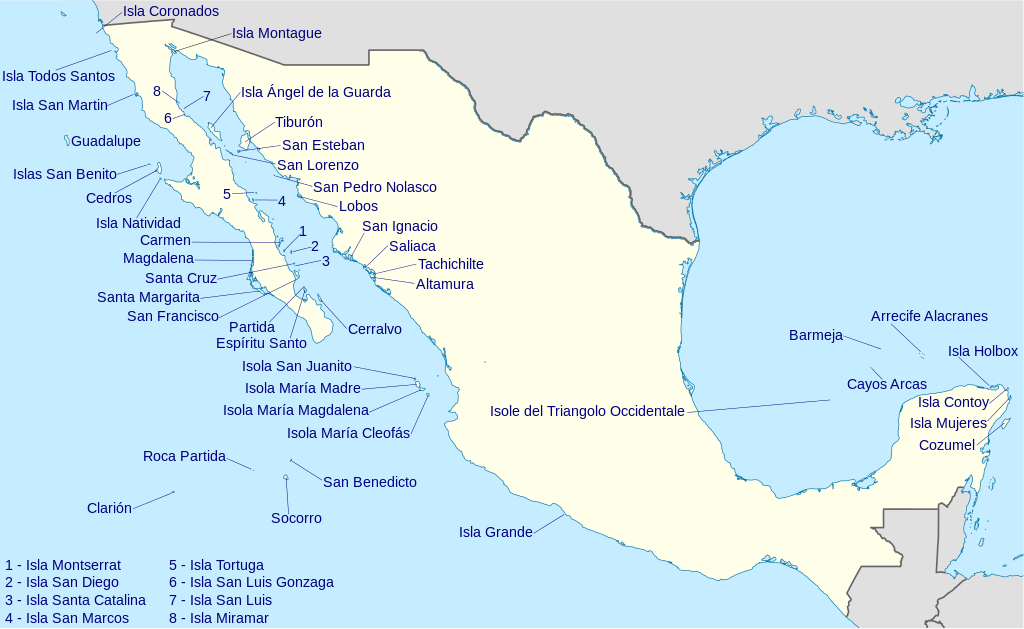
Map of the islands of Mexico.
Notable Islands
Cozumel: Located off the Yucatán Peninsula, Cozumel is a popular cruise ship destination known for its vibrant coral reefs, making it a top spot for diving and snorkeling. Much of the island is part of the Isla Cozumel Biosphere Reserve.
Isla Holbox (Holbox Island): Situated off the northern coast of the Yucatán Peninsula, Isla Holbox is known for its relaxed atmosphere, sandy beaches, and opportunities to swim with whale sharks.
Isla Tiburón (Tiburón Island): The largest island in Mexico, located in the Gulf of California, is home to the indigenous Seri people. It has a unique desert ecosystem and is a protected natural area.
Isla Espíritu Santo (Espiritu Santo Island): Part of the Gulf of California's UNESCO-listed Islands and Protected Areas of the Gulf of California, Espíritu Santo Island is famous for its clear waters, diverse marine life, and stunning rock formations.
Isla Mujeres (Island of Women): Located near the Yucatán Peninsula, Isla Mujeres is known for its laid-back vibe, beautiful beaches, and the ancient Mayan temple dedicated to the goddess Ixchel.
Isla San Pedro Nolasco (San Pedro Nolasco Island): Situated in the Gulf of California, this island is known for its natural beauty, hiking trails, and water sports opportunities.
Isla San José (San José Island): Also in the Gulf of California, San José Island is part of a protected area. It offers opportunities for ecotourism, diving, and birdwatching.
Isla Cedros (Cedros Island): Located in the Pacific Ocean, off the coast of Baja California, Cedros Island is known for its rugged landscape, diverse flora and fauna, and opportunities for outdoor activities.
Isla Todos Santos (Todos Santos Island): Off the coast of Baja California, this island is known for its challenging surf breaks and rocky cliffs, making it a popular destination for surfers.
Isla Guadalupe: A remote volcanic island in the Pacific Ocean, Isla Guadalupe is famous for its great white shark population, attracting divers and researchers interested in shark encounters.
Isla Socorro: Part of the Revillagigedo Islands, Isla Socorro features a volcanic landscape. It is a prime spot for divers interested in encountering large marine species like sharks and manta rays.
Isla Angel de la Guarda (Angel de la Guarda Island): Also in the Gulf of California, this island is known for its rugged terrain, diverse landscapes, and opportunities for outdoor activities.
Isla Coronados (Coronados Islands): A group of four islands in the Pacific Ocean near Baja California, the Coronados Islands are known for their marine life, making them a popular destination for diving and snorkeling.
Isla de Alcatraz (Alcatraz Island): This island, located off the coast of Sonora, is known for its bird colonies and is part of the Sea of Cortez Islands and Protected Areas Biosphere Reserve.
Isla Cerralvo (Cerralvo Island): Situated in the Gulf of California, Cerralvo Island offers opportunities for water sports, fishing, and enjoying its beaches.
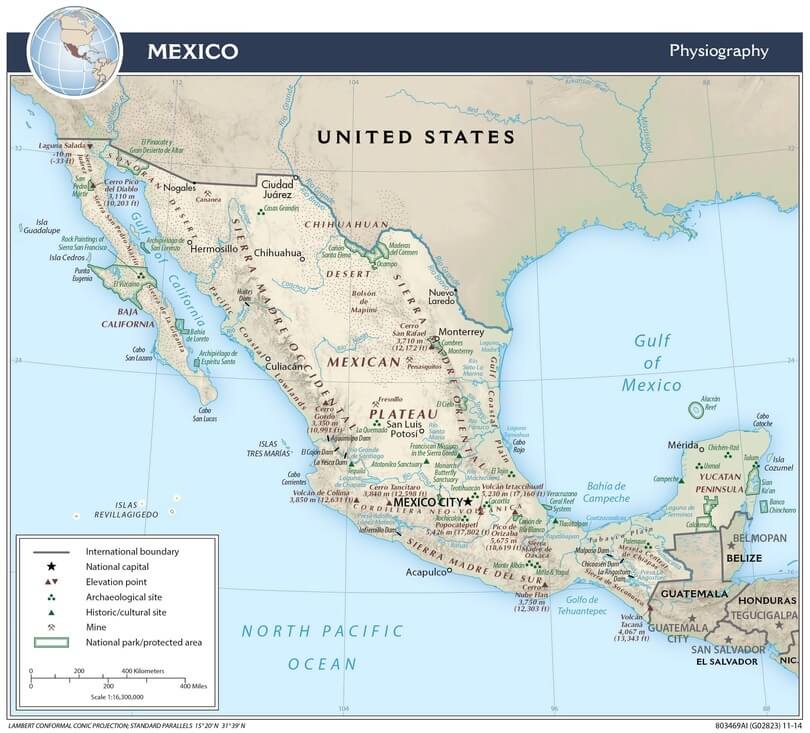
Mexico physiographic map.
